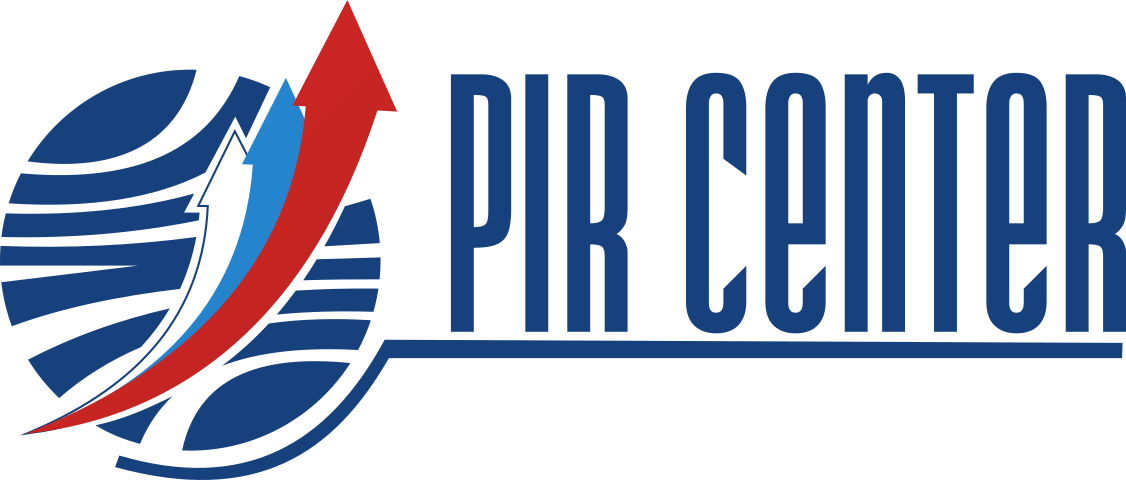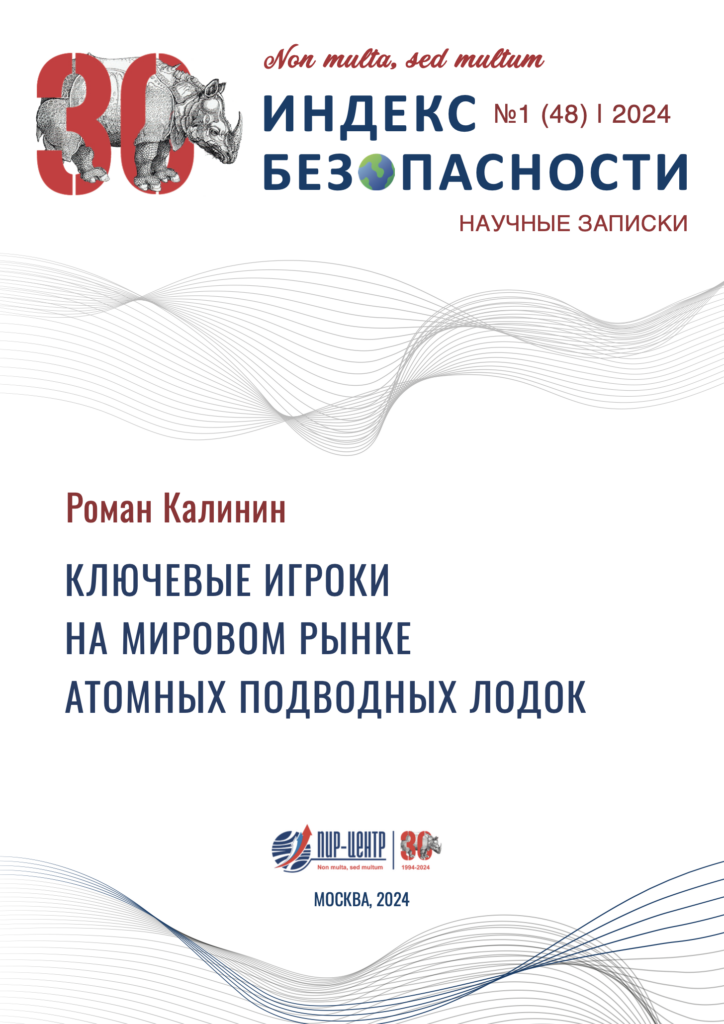MOSCOW. MARCH 28, 2024. PIR PRESS. «The author managed to develop the topic well. I have learned a lot and would like to have this research paper in my library as a reference. A good analysis and systematized material are presented, and if necessary, you can always refer to this work», — Mr. Igor Vishnevetsky, an independent expert, noted during a PIR Center expert seminar on the topic Key Players in the Global Nuclear Submarines Market and Their Export Models.
On March 7, 2024, PIR Center published a new occasional paper of Security Index, dedicated to the key players in the global nuclear submarine market. The research paper was prepared by Mr. Roman Kalinin, an intern of the PIR Center’s Nuclear Nonproliferation and Russia Program (2023).
The presence of a nuclear submarine fleet has always been considered a pledge of prestige and a reliable guarantee of a country’s security. Today, six of the nine nuclear powers have nuclear-powered submarines (SSNs) of various types as part of their navies. Among them: China, India, France, Russia, the UK, and the US. There is a growing interest in the possession of SSNs by non-nuclear-weapon states. In this regard, the study of the SSN forces of key players, as well as the reasons for the implementation of SSN fleet construction programs by non-nuclear-weapon states and their impact on the international nuclear nonproliferation regime is of particular relevance. The purpose of the research paper is to define the military-political aspects of the SSNs program development and to identify the business model of market behavior of the leading SSN exporters.
Key points of the research paper.
- The United States, Russia, China, and France consider the construction and modernization of their SSN fleets as a key element of deterrence. Besides, non-nuclear-weapon states, such as Brazil, the Republic of Korea, India, and the Islamic Republic of Iran, are seeking to possess SSNs.
- The United States adheres to the doctrine of maritime superiority. The maritime component of its nuclear triad is the most powerful in the world. The US SSNs are considered to be the quietest and most modern, which determines the interest of the allies in importing them.
- Since Soviet times, the Russian SSN fleet has been one of the most powerful in the world, and, as of July 2023, it has 38 nuclear-powered submarines and 21 diesel-electric submarines. Russia has extensive experience in submarine exports, but the development of Russia’s export potential faces difficulties such as international sanctions and attempts by Western countries to isolate Russia. In addition, the implementation of large projects is affected by the internal political situation. Under the conditions of the Special Military Operation of the Russian Armed Forces in Ukraine, the loading of plants is aimed at meeting the needs of its own fleet. Thus, the defense budget is generally adjusted to the goals of the Special Military Operation.
- The modernization of the fleet is considered one of the priorities for the Chinese People’s Liberation Army Navy (PLAN). China’s huge production resources, combined with the construction of SSNs of the proper quality, will make it possible to begin selling them for export. However, it is premature to talk about any export prospects in the foreseeable future due to the current lag of China behind the leading nuclear powers in this area. Dr. Vasily Kashin, Director of the Faculty of World Economy and International Affairs at HSE University, noted that “technologies related to SSN secrecy are among the country`s critical weaknesses, overcoming which is a key priority”.
- France’s nuclear-powered submarine fleet is built according to the principle of reasonable sufficiency. The French export model is one of the most successful (Naval Group is the main supplier of naval weapons) and has low risks for the nuclear nonproliferation regime because the country does not transfer know-how on nuclear propulsion system design.
- Brazil, along with Australia, could become the first non-nuclear-weapon state to possess nuclear-powered submarines. From the perspective of the international nuclear nonproliferation regime, the Brazilian case differs from the Australian one, first of all, because Brazil enriches uranium itself and its nuclear program is controlled by the Brazilian-Argentine Agency for Accounting and Control of Nuclear Materials (La Agencia Brasileño- Argentina de Contabilidad y Control de Materiales Nucleares, ABACC).
- The Republic of Korea is a threshold state. Against the background of the general militarization of the country, South Korea may choose to develop its own SSN fleet and follow both the AUKUS example and the Brazilian experience in constructing nuclear-powered submarines.
- The Indian submarine fleet is at the stage of major modernization. In particular, since 2015, a plan to build six domestically produced Arihant-class submarines has been implemented. Nevertheless, India remains a promising importer in the nuclear submarine market.
- Russian submarines delivered to Iran in the late 1990s are the most powerful in the Iranian submarine fleet. However, they are already considered obsolete, so Iran intends to replace them with Fateh-class diesel-electric submarines of its own production. In addition, the country remains a promising partner for the export of SSNs.
- A review of nuclear-powered submarine construction programs and their development prospects demonstrates that interest in the creation of a nuclear submarine fleet is taking the form of a trend. Nevertheless, the legal framework is still being developed and requires efforts to establish unified criteria for the concept of non-military nuclear activities, as well as verification mechanisms.
This report is published within the framework of the project “Global Security: A View from Russia for the Youth Around the World” (with the support of the Presidential Grants Foundation).
Key words: Security Index; SSN; Nuclear Nonproliferation
SIRUS
E16/MIN – 24/03/28


